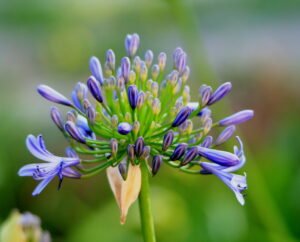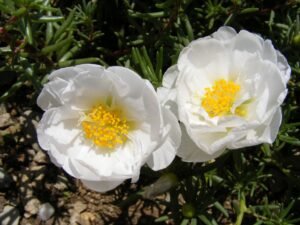Learn How to Grow and Care for Spider Plants

The spider plant is a very popular houseplant among home gardeners because of its intriguing leaf appearance and air-purifying properties. This article will help you understand how to grow and care for spider plants.

Often known as the “spider plant,” Chlorophytum comosum is a kind of evergreen perennial flowering plant that belongs to the Asparagaceae family. It is also known by various common names, such as ribbon plant, airplane plant, and spider ivy. It is an ideal hanging basket plant due to its growth pattern.
Some Interesting Facts About Spider Plant
The spider plant is an air-purifying plant. It absorbs toxins like xylene, formaldehyde, benzene, and carbon monoxide from the air and releases fresh oxygen. Apart from its appearance, this is one of the famous reasons why it is popular as a houseplant.
The spider plant is a tropical plant. It is indigenous to southern and tropical Africa. Despite this, it is now planted all over the world as an ornamental plant.
The spider plant is a natural humidifier. It has a high transpiration rate, and it releases moisture through its stems and leaves.
The spider plant roots are special as they have evolved to hold water. These fleshy roots and rhizomes help plants survive in irregular watering conditions.
Some Frequently Asked Questions About Spider Plants
Do spider plants prefer sun or shade?
Spider plants prefer bright to moderate, indirect sunlight. Too much direct sunlight and heat can burn their leaves, causing brown tips and leaves.
Spider plants are ideal for low-light environments because of their tolerance for moderate lighting. However, it should be noted that spider plants may lose their varigation and grow lanky when planted in a dark environment.
Is a spider plant an annual or perennial?
Spider plants are hardy perennials. The life span of a spider plant is approximately 20 years. They grow rapidly with proper care.
When should I repot the spider plant?
As already explained, spider plants are rapid growers and may need repotting from time to time.
Before repotting, check if the pot’s drainage hole has roots and its leaves are healthy.
Because even though spider plants prefer to be root-bound, they need to be repotted when their roots are visible and their leaves have begun to turn brown or yellow.
Always do the repotting in the spring, and completely avoid the repotting in the winter.
Why is a spider plant called a spider plant?
Spider plants produce small plantlets that vaguely resemble spiders, hence the name. So don’t worry. It has nothing to do with the actual spiders.
Is the spider plant toxic?
The good thing about spider plants is that they are not toxic. So they are safe around pets and children. But it should be noted that accidental ingestion of its leaves can still cause vomiting and diarrhea.
How To Care For Spider Plants
The Right Location For Spider Plants
It is important to select the right location for spider plants. As already explained, the spider plant likes indirect sunlight, so select a sunny window for the spider plant.
In its native environment, this tropical plant thrives in the shade of big trees. It will therefore grow to its full potential if we can duplicate those growing conditions.
The Right Pot For Spider Plants
Spider plant roots like good air circulation around them, so selecting a terracotta pot will be good for them. Select a pot with a drainage hole.
Always select a pot slightly larger than the root ball of the plant, as snake plant roots like to be crowded.
The Right Potting Soil For Spider Plants
Spider plants like potting soil with good drainage quality. In fact, spider plants grow best in slightly acidic to neutral soil. The ideal soil pH for spider plants is between 6.0 and 7.5.
Nutrient-rich sandy to loamy soil is best for growing spider plants.
You can prepare potting soil mix for spider plants at home by mixing 1 part garden soil, 1 part sand, and 1 part vermicompost, compost, or organic manure.
The Right Watering Care For Spider Plants
The right watering practices are essential for spider plant care. Because overwatering can kill spider plants through root rot.
When watering the spider plant, ensure that water is coming out of the drainage holes, and then allow the top two to three inches of soil to completely dry before the next watering.
Spider plants are sensitive to fluoride toxicity. So if you are watering your spider plant with tap water, check the fluoride level in the water before hand.
Excess fluoride buildup in soil can cause brown tips in leaves and root damage. Also, fluoride deposits in soil make it difficult for plants to absorb moisture from the soil and cause dehydration in spider plants.
The Right Fertilizer Care For Spider Plants
Spider plants grow rapidly and need nutrients to gain optimum growth. It is a good practice to keep slow-released and balanced organic fertilizer in potting soil from the beginning.
Additionally, you can feed your spider plants water-soluble NPK (20-20-20), which is balanced and has essential plant nutrients nitrogen, phosphorous, and potassium in equal quantity.
Fertilize the spider plant during its growth in the spring and late summer. Avoid fertilizing in winters as plants are dormant in this season.
Use fertilizers in moderation because overfertilizing spider plants can cause root and leaf burns, which can ultimately kill the plant.
The Right Pests and Disease Care for Spider Plants
The most common cause of death for spider plants is root rot, which can be brought on by either excessive watering or inadequate soil drainage.
As already explained in this article, make the right potting soil mix and water only when the top two to three inches of soil is dry to the touch.
Because of their thick leaves, spider plants are resistant to most pests. But still, sometimes spider plants can fall prey to pest infestations.
The most common spider plant pests are spider mites, mealybugs, scales, thrips, and whiteflies. Regularly inspect the plant for any signs of pest infestation.
If your spider plant has fallen prey to insects and pests, you can spray a neem oil mixture on alternate days until the problem is resolved.





